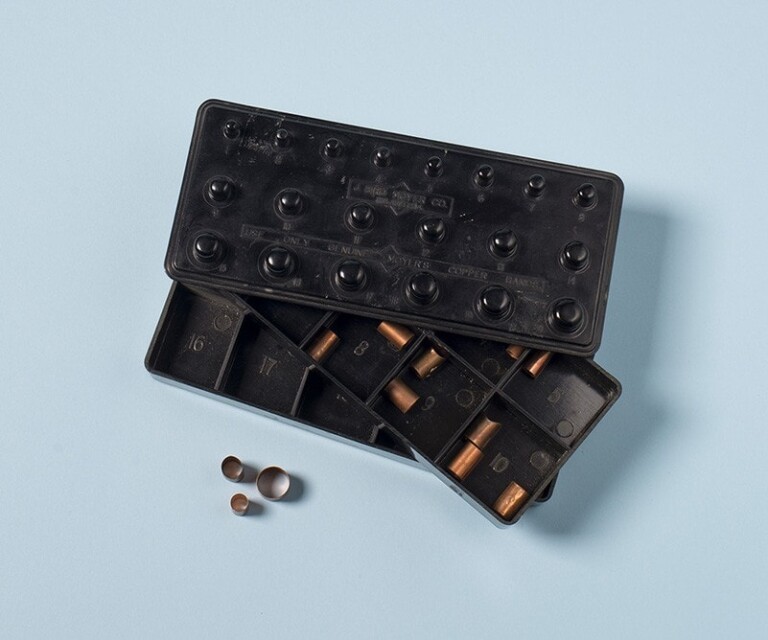Before the days of retraction cord, polyethers and polyvinyl siloxanes — and way, way before the days of CAD/CAM systems — the preferred technique for taking crown and bridge impressions was copper bands and compound.
The Bakelite box here — the proverbial Forrest Gump–style box of chocolates — was the common way to store these copper bands in postwar operatories. Above, you can see the bands, which came in sizes ranging from 1 to 20 — something I know all too well: My childhood job at Benco Dental, which I began when I was 10, was to take our annual copper-band inventory. It took me hours. Ugh!
A dentist in those days would prepare a tooth, then select a copper band that could just fit over it. The band was then filled with warm compound and pushed over the prepped tooth. (If you’ve never heard of compound, keep checking this space.) For a four-unit bridge, the dentist would repeat the process four times.
While this procedure was time-consuming, the clinician would wind up with a clean, detailed impression that clearly reflected the prepared tooth and margins. Usually, the copper-band impressions were removed by overlaying a tray loaded with a rubber base material that carried the extra benefit of smelling like a Goodyear factory.
The copper-band technique was an arduous way to create a crown or bridge, but it certainly worked well, so much so that a handful of dentists still use the copper bands technique majestic dinosaurs on their way to extinction to this day — majestic dinosaurs on their way to extinction.


